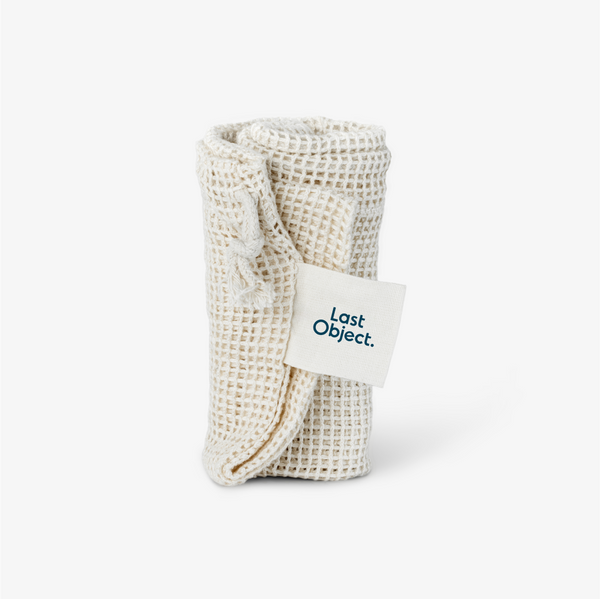Sustainability 101
Silicone vs Plastic: Is Silicone An Alternative To Single-Use Plastic?
joulukuu 15, 2021
Plastic has been getting a bad reputation recently, and not without good cause. Each American, on average, discards 130kg of plastic each year. Over a lifetime, that’s a lot of plastic. Some of it is recycled, but most of it ends up in landfills or making its way into our oceans. Once there, the plastic breaks down into microparticles where it is consumed by wildlife and enters our food chain.
There’s no doubt that we have a plastic problem. We have become increasingly reliant on single-use plastic items as part of our daily lives. This is one of the biggest contributing factors to our plastic waste issue. Some people have begun touting silicone as an alternative to our everyday use of plastic. Silicone shares many properties with plastic. It’s flexible and easily molded, so it works well as a replacement for many plastic products.
But is silicone better than plastic? How does silicone affect the environment? We will explore the issues in the silicone vs. plastic debate, further below.
Like plastic, silicone can be melted down and molded into whatever shape is required. It is a flexible, durable material, so it is often touted as an alternative to common plastic products. Its insulating properties make it perfect for use as an electrical insulator in our electronic devices. It is also water-resistant, so you can find it being used as a sealant in your home. Common household goods like baking equipment are now being made from silicone too.
Silicone is a very stable and heat-resistant material. It does not break down easily and it can endure high temperatures before it will start to degrade. The same cannot be said about plastic, which we will explore further in this article.
This process is long and can be costly, which is why silicone is more expensive than plastic. But the result is a stable and durable material that shares many physical properties with plastic, without some of the downsides.

Both silicone and plastic manufacturing requires large amounts of energy to heat and refine the raw materials. But unlike silicone, plastic factories emit several toxic waste materials into the environment. Among these chemicals are benzene, ethylene oxide, ethylbenzene, and nickel, which cause toxic air pollution near plastic plants.
Pros
Cons
1) Silicone does not biodegrade. This might sound like a bad thing, but this actually gives it an advantage over plastic. Plastic is an unstable material and once it enters the environment, it tends to break down into very small particles. These particles have been shown to cause health problems in wildlife. We are also beginning to understand how these microplastic pollutants might also be affecting human health.
2) Silicone is far more stable than plastic. Its main ingredient silicon is an inert substance, which does not interact with other chemicals. This means that silicone is far more food-safe than plastic and does not leach toxic chemicals into our food. Plastic is less stable and can expose us to estrogen-mimicking chemicals which pose harm to our bodies.
3) Silicone is more durable. Since silicone products last longer than plastic ones, we end up replacing them less. Silicone products can be used again and again, and this cuts down on excess plastic in the environment.
4) Both can be recycled on a limited basis. Many curbside recycling programs in the US will accept plastic, but not all plastics are recyclable. And when plastic is recycled, it has a limited lifespan and is usually only recycled once. Silicone products are not currently accepted by most curbside programs. However, there are some specialty recycling facilities that will accept it.
5) Silicone is oven and dishwasher safe. Plastic and ovens usually don’t mix. Plastic degrades at high temperatures which can cause chemicals to leach into your food. Even plastic items that are labeled dishwasher safe have been known to occasionally melt if placed in the wrong part of the dishwasher. Silicone is far more heat resistant and is used in baking equipment such as cupcake cases, without melting or leaching chemicals.
Silicone does not present all the answers to our environmental crisis. However, we can reduce our reliance on single-use plastics by swapping them with silicone. Silicone products will last far longer, allowing us to avoid repeatedly buying new plastic products. Every small change that we make contributes to helping the future of our environment.
There’s no doubt that we have a plastic problem. We have become increasingly reliant on single-use plastic items as part of our daily lives. This is one of the biggest contributing factors to our plastic waste issue. Some people have begun touting silicone as an alternative to our everyday use of plastic. Silicone shares many properties with plastic. It’s flexible and easily molded, so it works well as a replacement for many plastic products.
But is silicone better than plastic? How does silicone affect the environment? We will explore the issues in the silicone vs. plastic debate, further below.
Is Silicone The Same As Plastic?
Silicone shares many properties with plastic and rubber, but it is a separate type of material. Rubber is made from the sap of the rubber tree and plastic is made from crude oil. The main ingredient of Silicone is silica, a compound naturally found in rocks. This raw ingredient goes through a complex chemical process to turn it into the silicone found in products we use.Like plastic, silicone can be melted down and molded into whatever shape is required. It is a flexible, durable material, so it is often touted as an alternative to common plastic products. Its insulating properties make it perfect for use as an electrical insulator in our electronic devices. It is also water-resistant, so you can find it being used as a sealant in your home. Common household goods like baking equipment are now being made from silicone too.
Silicone is a very stable and heat-resistant material. It does not break down easily and it can endure high temperatures before it will start to degrade. The same cannot be said about plastic, which we will explore further in this article.
What Is Silicone Made From?
Silicone is created using the compound silica, which is found in rocks like sandstone. But like plastic, silicone is not a natural product. The silica must first go through an elaborate heating and distillation process. This breaks down its molecules until the element “silicon” can be extracted. This silicon element is then combined with oxygen molecules, to make the new material that we call silicone.This process is long and can be costly, which is why silicone is more expensive than plastic. But the result is a stable and durable material that shares many physical properties with plastic, without some of the downsides.

What Is Plastic Made From?
Plastic is made from raw materials such as crude oil, natural gas, and plants. These base ingredients are then refined into ethane and propane. After this, the two chemicals go through a heating process until they are transformed into plastic polymers. The name “plastic” comes from its main characteristic – plasticity – which means it can be molded easily.Both silicone and plastic manufacturing requires large amounts of energy to heat and refine the raw materials. But unlike silicone, plastic factories emit several toxic waste materials into the environment. Among these chemicals are benzene, ethylene oxide, ethylbenzene, and nickel, which cause toxic air pollution near plastic plants.
Pros & Cons Of Silicone
Here we examine some of the pros and cons of using silicone.Pros
- Silicone is non-toxic and does not leach harmful chemicals into the environment. All the raw materials that go into creating silicone are approved by the FDA for use in food-grade appliances.
- It is a very stable material, which means it can resist both high and low temperatures. It can tolerate as high as 300.2°F (degrees Fahrenheit) and as low as -76°F without degrading.
- Another advantage of its stability is that it does not react easily with other chemicals.
- It is a very hygienic material since it does not contain any small holes to harbor bacteria.
- Silicone is extremely durable, which means it will last a long time before you must dispose of it or replace it.
Cons
- Silicone is a synthetic product that is not renewable. The raw materials that make up silicone are finite.
- Since silicone is such a stable material, this means it does not biodegrade. On the one hand, this makes it very durable. However, it will also persist in the environment for a very long time.
- If it is heated to a very high temperature (above 149°C/ 300.2°F), its stability can become compromised.

Silicone vs Plastic
With the current trend towards silicone products, many people are asking why is silicone better than plastic? Let’s compare the two materials.1) Silicone does not biodegrade. This might sound like a bad thing, but this actually gives it an advantage over plastic. Plastic is an unstable material and once it enters the environment, it tends to break down into very small particles. These particles have been shown to cause health problems in wildlife. We are also beginning to understand how these microplastic pollutants might also be affecting human health.
2) Silicone is far more stable than plastic. Its main ingredient silicon is an inert substance, which does not interact with other chemicals. This means that silicone is far more food-safe than plastic and does not leach toxic chemicals into our food. Plastic is less stable and can expose us to estrogen-mimicking chemicals which pose harm to our bodies.
3) Silicone is more durable. Since silicone products last longer than plastic ones, we end up replacing them less. Silicone products can be used again and again, and this cuts down on excess plastic in the environment.
4) Both can be recycled on a limited basis. Many curbside recycling programs in the US will accept plastic, but not all plastics are recyclable. And when plastic is recycled, it has a limited lifespan and is usually only recycled once. Silicone products are not currently accepted by most curbside programs. However, there are some specialty recycling facilities that will accept it.
5) Silicone is oven and dishwasher safe. Plastic and ovens usually don’t mix. Plastic degrades at high temperatures which can cause chemicals to leach into your food. Even plastic items that are labeled dishwasher safe have been known to occasionally melt if placed in the wrong part of the dishwasher. Silicone is far more heat resistant and is used in baking equipment such as cupcake cases, without melting or leaching chemicals.
What’s The Verdict: Is Silicone Safer Than Plastic?
There are many issues surrounding the silicone vs. plastic debate, but it’s clear that silicone still comes out on top. It may not be biodegradable, but it does not create microparticles in the environment like plastic. This alone is a good enough reason to choose silicone over plastic if given the choice.Silicone does not present all the answers to our environmental crisis. However, we can reduce our reliance on single-use plastics by swapping them with silicone. Silicone products will last far longer, allowing us to avoid repeatedly buying new plastic products. Every small change that we make contributes to helping the future of our environment.
MORE Sustainability 101 ARTICLES View all ›
Ready to make
the switch?
- Powerful Cleaning
- Dissolves Easily
- Skin-Friendly
- Eco-Friendly
- No Mess















